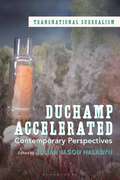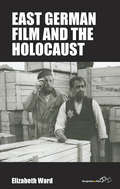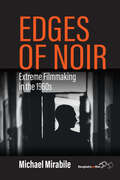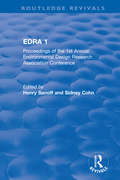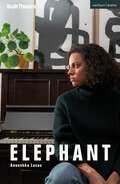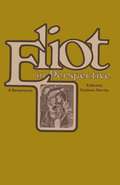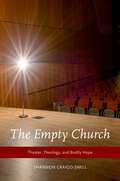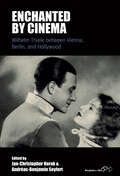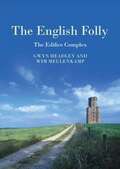- Table View
- List View
Duchamp Accelerated: Contemporary Perspectives (Transnational Surrealism)
Marcel Duchamp is today considered one of the most significant 20th century artists worldwide. His far-reaching influence is visible within a variety of areas of creative production and critical inquiry, extending far beyond the world of art. Duchamp Accelerated: Contemporary Perspectives examines Duchamp and his reception through a series of essays that explore the ongoing impacts of his life, ideas and practice on innumerable fields of research, practice and study. Contributors include art historians, curators, artists and writers who offer histories and approaches that actively challenge dominant narratives on Duchamp, discussing his influences from a multitude of different disciplinary and cultural perspectives. Written in the specific context of the 21st century, this volume situates the artist firmly in a global context and highlights the numerous influences – from theories of perception and the writings of Georges Bataille, to travels in Argentina – that shaped his ideas and art. This volume pushes current understandings of Duchamp beyond existing limits by accelerating the histories, encounters, dialogues and interpretations of his practice, with a focus on contemporary perspectives. The 'accelerated' Duchamp that emerges from this analysis is one who not only speeds up notions of art in relation to cultural and political histories, but one whose practice is actively informing future developments in the worlds of art and material culture today.
East German Film and the Holocaust (Film Europa #22)
by Elizabeth WardEast Germany’s ruling party never officially acknowledged responsibility for the crimes committed in Germany’s name during the Third Reich. Instead, it cast communists as both victims of and victors over National Socialist oppression while marginalizing discussions of Jewish suffering. Yet for the 1977 Academy Awards, the Ministry of Culture submitted Jakob der Lügner – a film focused exclusively on Jewish victimhood that would become the only East German film to ever be officially nominated. By combining close analyses of key films with extensive archival research, this book explores how GDR filmmakers depicted Jews and the Holocaust in a country where memories of Nazi persecution were highly prescribed, tightly controlled and invariably political.
Easy Mission-Style Woodworking Projects
by Edward F. WorstPopularized during the early twentieth century (and for many, a welcome relief from ornately extravagant Victorian furnishings), Mission-style furniture, with its straight lines and cut-out features, is fashionable again. This volume, one of the best manual art instruction books of the early 1900s, shows woodworkers of all ages and abilities how to create handsome replicas of these sturdy, decorative pieces.Perfect for beginners, yet challenging enough for experienced builders, the guide includes photographs, precise diagrams, measurements, and complete instructions for making a wide array of domestic accessories—from bread boards, candlesticks, and tabourets, to folding tables, chairs, floor lamps, and writing desks.An invaluable guide for workshop projects, this volume will be of interest, as well, to miniaturists, collectors, and historians of American style.
Edges of Noir: Extreme Filmmaking in the 1960s
by Michael MirabileEdges of Noir challenges the notion that noir film nearly vanished after 1958 until its subsequent “neo-noir” revival between 1973 and 1981. The 1960s, regardless of critical neglect, include some of the most provocative films of the post-World War II decades. Often formally disruptive and experimental, films including Shock Corridor (1963), Mirage (1965), The 3rd Voice (1960), and Point Blank (1967) evoke controversial issues of the era, deriving dynamic influences amongst exploitation cinema, sensationalistic American B movies, and the European New Wave movement. Whether the focus is on nuclear destruction, mind control, or surveillance, late noir films, above all else, vividly portray the collective fears from the time.
Edit Like A Pro With Imovie: Leverage Apple's Free Editor For Ios, Ipados, And Macos And Enrich Videos With Keynote Animations
by A01 RegitEDRA 1: Proceedings of the 1st Annual Environmental Design Research Association Conference (Routledge Revivals)
by Henry Sanoff Sidney CohnOriginally published in 1970, EDRA 1 is a record of the conference proceedings of the 1st annual Environmental Design Research Association conference. The papers featured in this volume represent the proceedings of the conference and are concerned mainly with contributions of scientific disciplines towards the creation of improved methods of problem-solving environmental design, as well as understanding the nature of human responses to the environment. The papers included in this volume focus on developing models and methods towards a framework of coherence and definable structure of environmental design, with the ultimate objective of achieving an optimum environment for man. This volume will be of great interest to planners, architects and academics of urbanisation alike. Although published over 40 years ago, the book’s content is still as relevant and interesting today as it was at the time of publication.
EDRA 1: Proceedings of the 1st Annual Environmental Design Research Association Conference (Routledge Revivals)
by Henry Sanoff; Sidney CohnOriginally published in 1970, EDRA 1 is a record of the conference proceedings of the 1st annual Environmental Design Research Association conference. The papers featured in this volume represent the proceedings of the conference and are concerned mainly with contributions of scientific disciplines towards the creation of improved methods of problem-solving environmental design, as well as understanding the nature of human responses to the environment. The papers included in this volume focus on developing models and methods towards a framework of coherence and definable structure of environmental design, with the ultimate objective of achieving an optimum environment for man. This volume will be of great interest to planners, architects and academics of urbanisation alike. Although published over 40 years ago, the book’s content is still as relevant and interesting today as it was at the time of publication.
Edwin Rickards (Victorian Architects)
by Timothy Brittain-CatlinEdwin Rickards was the most flamboyant of Edwardian architects: his buildings were said by John Summerson to fizz like champagne. During a short working life, launched at the age of 25 by winning the competition to design Cardiff City Hall with his partners H.V. Lanchester and James Stewart, he completed four spectacular baroque buildings. Rickards’ work was unique in Edwardian architecture for his personal combination of French and especially Austrian sources. Working closely with H.C. Fehr and Henry Poole, leading practitioners of the New Sculpture, he designed two of the major monuments of the period. As well as being one of the best freehand draughtsmen in London, he was also a prodigious caricaturist. With a foot in the demi-monde and an endless appetite for architectural and personal adventure, Rickards was an unforgettable figure to everyone who met him. Illustrated throughout with stunning new photography by Robin Forster and by Rickards’ own sketches and drawings, this book portrays his close friendship with the novelist Arnold Bennett who described him, along with H.G Wells, as one of ‘the two most interesting, provocative, and stimulating men I have yet encountered’, and his meteoric career that ended with his early death.
Elephant (Modern Plays)
by Anoushka LucasWinner of Best Writer at The Stage Debut Awards 2023"The men with the Piano look up the narrow staircase of our little flat and they turn to Dad, light their fags, and say; “We might have to take the windows out". A piano came through the sky and landed in Lylah's council flat, just for her. As she pours over the keys and sound floods into all the rooms, Lylah falls in love.At school, Lylah can't ask questions – she's got to be good, good, good or else she'll lose her scholarship. At home she can't ask questions; her cousins say she talks weird, and her parents are distracted. So she asks her piano: Where did you come from? Why are you here? And their shared history tumbles into the light.Part gig, part musical love story, part journey through Empire, this all-new expanded production of Olivier Award nominee Anoushka Lucas' “exquisite” (Evening Standard) Elephant transferred to the Bush Theatre's main house. This revised and expanded edition of the play accompanies the new 2023 production.
Empire State Building, USA (Large Print)
This image shows the 381 metre tall Empire State Building surrounded by a dashed line image border. The base of the building is on the bottom of the page. There is a locator dot shown, which will be at the top left of the page when the image is the right way up. At the bottom of the page two dots can be found, these represent the large entrance doorways. They show how tall the building is. Up from this the building stretches up, becoming narrower towards the top. At the top of the image, the building steps dramatically inwards, becoming narrower, finally reaching the broadcasting antenna.
Empire State Building, USA (UEB Contracted)
This image shows the 381 metre tall Empire State Building surrounded by a dashed line image border. The base of the building is on the bottom of the page. There is a locator dot shown, which will be at the top left of the page when the image is the right way up. At the bottom of the page two dots can be found, these represent the large entrance doorways. They show how tall the building is. Up from this the building stretches up, becoming narrower towards the top. At the top of the image, the building steps dramatically inwards, becoming narrower, finally reaching the broadcasting antenna.
Empire State Building, USA (UEB uncontracted)
This image shows the 381 metre tall Empire State Building surrounded by a dashed line image border. The base of the building is on the bottom of the page. There is a locator dot shown, which will be at the top left of the page when the image is the right way up. At the bottom of the page two dots can be found, these represent the large entrance doorways. They show how tall the building is. Up from this the building stretches up, becoming narrower towards the top. At the top of the image, the building steps dramatically inwards, becoming narrower, finally reaching the broadcasting antenna.
Enchanted by Cinema: Wilhelm Thiele between Vienna, Berlin, and Hollywood (Film Europa #29)
by Jan-Christopher Horak Andréas-Benjamin SeyfertWilliam Thiele is remembered today as the father of the sound film operetta with seminal classics such as Drei von der Tankstelle (1930). While often considered among the most accomplished directors of Late Weimar cinema, as an Austrian Jew he was vilified during the onset of the Nazi regime in 1933 and fled to the United States where he continued making films until the end of his career in 1960. Enchanted by Cinema closely examines the European musical film pioneer’s work and his cross-cultural perspective across forty years of filmography in Berlin and Hollywood to account for his popularity while discussing issues of ethnicity, exile, comedy, music, gender, and race.
England’s Co-operative Movement: An Architectural History
by Lynn PearsonThe neighbourhood co-op store was an essential element in the English shopping landscape for a century and more. Initially identified by the iconic co-operative symbols of beehives and wheatsheaves, eclectic store designs by local architects made a lasting impact on the townscape. Robustly independent local co-operative societies and lack of overall branding happily produced an unusually diverse range of architectural styles. And they were much more than just shops – their integrated educational facilities, libraries and halls made them a focal point for communities. The Co-op eventually offered a ‘cradle to grave’ service for its members. Behind the network of stores was the Co-operative Wholesale Society, the federal body responsible for manufacturing and distribution. Its factories employed thousands during the productive peak of the 1930s, and its architects brought modern design standards to bear on the whole gamut of co-op buildings. Co-op architecture is still around us countrywide, with everything from Victorian edifices to post-war artworks there to be seen and enjoyed. Using a wonderful selection of archive and modern illustrations, this book reveals the intriguing story behind the co-op’s buildings, from corner shops to vast department stores and innovative industrial structures. Remember, it’s all at the co-op now!
England’s Military Heritage from the Air (Historic England)
by Mark Bowden Allan BrodieEngland’s Military Heritage from the Air presents the story of the country’s rich military heritage using photographs from the Aerofilms Collection. Covering over 6,000 years, it reflects the changing threats faced by England from enemies without, and conflicts within. The book covers everything from hillforts to aircraft carriers and includes the castles, battle sites, ships and aircraft that have witnessed the changing character of warfare. Ending with how victory and sacrifice are commemorated and remembered, England’s Military Heritage from the Air is a tribute to the courage, skill and endurance of the people who have suffered yet prevailed.
English Children's Costume 1775-1920
by Iris BrookeLate in the 18th century, English children's apparel began to look different from that worn by their elders. The reason, says writer James Laver in his introduction, is that someone finally realized children were different! This engaging book records those changes, with illustrations depicting styles at five- or ten-year intervals, from 1775 to 1920. 32 black-and-white illustrations.
The English Folly: The Edifice Complex
by Gwyn Headley Wim MeulenkampIf this were a novel, the tales of astounding wealth, sexual perversion, murder, munificence, rape, insanity, brutality, slavery, religious mania, selfishness, snobbery, charity, suicide, generosity, theft, madness, wickedness, failure and eccentricity which unfold in these pages would be too concentrated to allow for the willing suspension of disbelief. All these sins and virtues, and more, are displayed by the characters in this book, some exhibiting several of them simultaneously. Folly builders were not as we are. They never built what we now call follies. They built for beauty, utility, improvement; it is only we, struggling after them with our imperfect understanding, who dismiss their prodigious constructions as follies. Follies can be found around the world, but England is their spiritual home. Having written the definitive books on follies in Great Britain, Benelux and the USA, Headley & Meulenkamp have turned their attention to the folly builders themselves, people so blinded by fashion or driven by some nameless ideology that they expended great fortunes on making their point in brick, stone and flint. Most follies are simply misunderstood buildings, and this book studies the motives, characters, decisions and delusions of their builders. If there was madness in their building, fortunately there was no method in it.
English Prisons: An Architectural History (English Heritage)
by Allan Brodie Jane Croom James O DaviesFor most of us, the prison is an unfamiliar institution and life 'inside' is beyond our experience. However, more than 60,000 people now live in our gaols, some serving their sentences in buildings with Victorian or more ancient origins, others in prisons dating from the last twenty years. 'English Prisons: An Architectural History' is the result of the first systematic written and photographic survey of prisons since the early 20th century. It traces the history of the purpose-built prison and its development over the past 200 years. Over 130 establishments that make up the current prison estate and over 100 former sites that have surviving buildings or extensive documentation have been investigated, institutions ranging from medieval castles and military camps to country houses that have been taken over and adapted for penal use. The Prison Service granted the project team unprecedented access to all its establishments, allowing the compilation of an archive of more than 5,000 images ad 250 research files. The team was allowed to go anywhere, to photograph almost anything (except where this could compromise security) and to speak to any inmate. A selection of the images from the archive illustrates this book.
Ernő Goldfinger (Twentieth Century Architects)
by Elain Harwood Alan PowersErnö Goldfinger (1902-1987) is noted for his pre-war Hampstead house, preserved with all its contents by the National Trust, and for his high-rise housing of the late 1960s. These buildings bookend a long and varied career as a modernist who thought deeply about domestic space, cities and the constructional discipline of architecture. Inspired by his teacher Auguste Perret, he carried the spirit of 1920s Paris to enliven the English architectural scene. Goldfinger offered imaginative alternatives to standard solutions for post-war schools, housing and offices, and excelled at the composition of clusters of free-standing buildings as well as fitting neatly into existing streets. An unexpected aspect of his work was the collaboration with Paul and Marjorie Abbatt, founders of Britain’s first modernist toy business. Based on thorough research in Goldfinger’s extensive archive and close knowledge of the full range of his projects, this book provides an accessible and generously illustrated account of a fascinating figure. A unique collaboration by two of Britain’s leading architectural historians of the twentieth century, Elain Harwood and Alan Powers have campaigned for the preservation of Goldfinger’s work for over thirty years.
The EU Killed My Dad (Modern Plays)
by Aaron KilerciogluWinner of the 2023 Woven Voices PrizeWho do you blame? The woman, the gun, or politics?Berker travels from Britain to Turkey to meet his estranged father, but it's too late: his sister Elif informs him that their Baba has already died. A family reunion becomes an exhilarating whodunnit investigation as Berker discovers the truth about his roots, grieves for a man he will never truly know, and accidentally unravels a conspiracy that goes to the heart of global politics.Featuring British spies, Turkish soldiers, and London's kebab shops, Aaron Kilercioglu's The EU Killed My Dad is the winner of the Woven Voices Prize 2023 and an inventive, fast-paced exploration of identity, belonging, and history spanning five decades. Aaron's previous award-winning work includes the sell-out hit For a Palestinian, which has been seen at Bristol Old Vic, the Camden People's Theatre, and Underbelly.This edition was published to coincide with the world premiere at London's Jermyn Street Theatre in January 2024.
